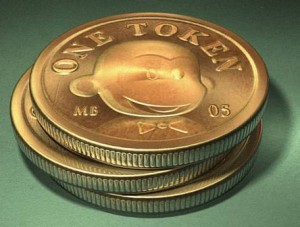 In a recent SMB Digital Marketing 2012 held in Chicago sponsored by BIA/Kelsey SMB Digital Conference, one of the major headlines is that Social Loyalty is the Next Big Marketing Strategy of 2013. Social Loyalty Apps such as http://socialloyaltyapps.com/ convert “likes” into “leads” and leads into loyal customers. The chart below shows where small business owners are putting in their marketing budget.
In a recent SMB Digital Marketing 2012 held in Chicago sponsored by BIA/Kelsey SMB Digital Conference, one of the major headlines is that Social Loyalty is the Next Big Marketing Strategy of 2013. Social Loyalty Apps such as http://socialloyaltyapps.com/ convert “likes” into “leads” and leads into loyal customers. The chart below shows where small business owners are putting in their marketing budget.
According to eMarketer, the new report, “Social Loyalty: From Rewards to a Rewarding Customer Experience,” analyzes findings from dozens of third-party research providers and interviews with industry executives. Here are some of the best practices for improving social loyalty.
Why? Because many traditional loyalty programs are not highly effective, eMarketer notes. While loyalty programs have been popular in the US for years—with the average American consumer belonging to 18 loyalty programs according to loyalty marketing publisher COLLOQUY—it is not clear how many of these consumers are actually active.
eMarketer further notes that points, coupons and freebies are great for grabbing initial attention. But in the long run these promotions can’t make up for a lackluster customer experience. However, through the use of social media, retailers and brands can identify and interact with the most profitable internet users. And for the first time ever, social networks such as Facebook makes it easier for businesses to acquire new customers through social loyalty programs. Why? Loyalty can be won through encouraging word-of-mouth and creating advocates or evangelists, by raising a user’s social status, by surprising and entertaining shoppers in unexpected ways and also by listening to customers’ needs and suggestions and responding in a mutually beneficial fashion. Brands that most often succeed typically encourage sharing, raise customers’ social status, develop highly entertaining loyalty programs, and listen and respond to feedback quickly. Social loyalty programs provide brands with an unprecedented amount of customer data, both online and offline.


